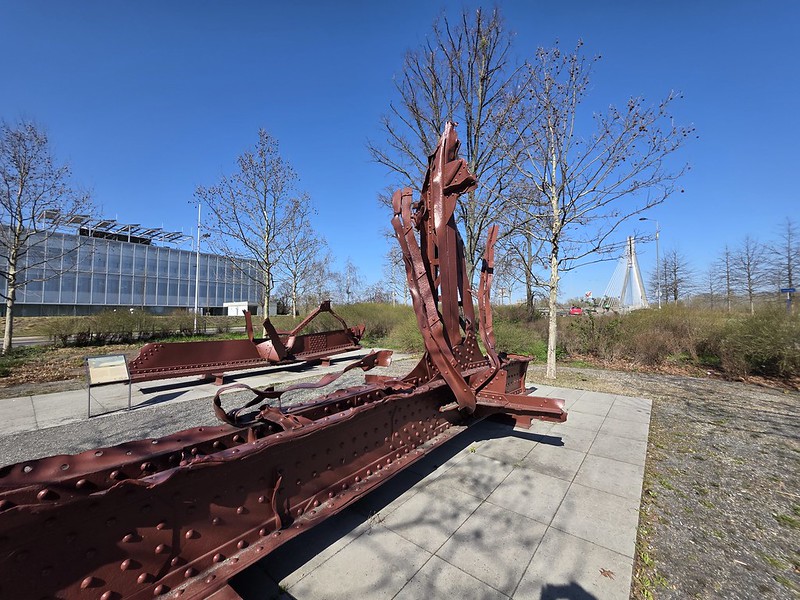Warsaw – Warsaw Pontiseum
It’s something of a grand title for these bits of bridge that are on display near the Vistula, but they do have an important heritage. It’s commemorating all of the bits of bridge that have been discovered at the bottom of the river since the Warsaw Uprising in 1944. They were lifted out of the river after seventy years by the Road and Bridge Research Institute in Warsaw. The name comes from ‘Ponte’, which is the Latin for bridge, and, well, ‘Museum’. I suspect my cleverer readers would have worked that latter part out themselves though. This little arrangement of bridge parts opened in 2014 and it’s stayed here near the river since then.
Warsaw’s bridges were systematically targeted and destroyed, first by retreating Russian forces on August 5, 1915, and later by German troops during the Warsaw Uprising on 13 September 1944. So, it’s time for a table:
| Bridge Name | Construction Dates | Key Historical Notes | |
|---|---|---|---|
| Kierbedzia Bridge | 1859–1864 | First permanent steel bridge in Warsaw; Destroyed WWI (1915) & WWII (1944) | |
| Poniatowski Bridge | 1904–1914 | Destroyed WWI (1915) & WWII (1944); Rebuilt multiple times | |
| Bridge under the Citadel | 1873–1875 | Located near present-day Gdański Bridge; Destroyed WWI (1915) & WWII (1944) |
This is Kierbedzia Bridge, the first permanent steel bridge in Warsaw which was constructed between 1859 and 1864. It was designed by Stanisław Kierbedź and was a six-span steel riveted truss structure of the American type, vital for the city’s expansion and economic life. Its history mirrored Warsaw’s fortunes, being destroyed first by retreating Russian forces in the First World War (5 August 1915) and then by German forces in the Second World War (13 September 1944).
This is Poniatowski Bridge which was built between 1904 and 1914. This was also destroyed during both the First and Second World Wars, in 1915 and then also on 13 September 1944. It must have annoyed the civil engineers who had built the thing, it stood for just one year before the Russians destroyed it. The replacement bridge opened in 1925, so that one managed to last nineteen years before it was destroyed.
This is the Bridge under the Citadel which was a railway bridge constructed between 1873 and 1875, located on the site of what later became Gdański Bridge. Once again, this was destroyed in 1915 and 1944.
These lumps of twisted steel are quite powerful, showing the determination to get them built to aid the country’s economy and then seeing them destroyed for defensive reasons in both World Wars. Fortunately, the replacements since the Second World War have fared somewhat better.








